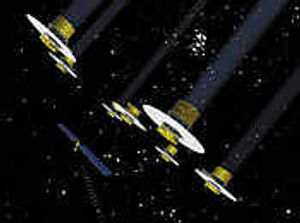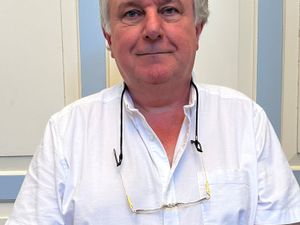Mission named after Darwin
The name of Charles Darwin, who was born in Shrewsbury on February 12, 1809, has been given to one of the most ambitious projects of the European Space Agency. Nearly 150 years ago Shropshire-born naturalist Charles Darwin caused controversy when he published a book suggesting man had been created not by God, but as a result of natural selection and evolution from other species. The publication of On the Origin of Species by Means of Natural Selection - now referred to as 'Origin of the Species' - caused waves throughout the scientific and Christian communities. Now the name of the scientist, who was born in Shrewsbury on February 12, 1809, has been given to one of the most ambitious projects of the European Space Agency. The Darwin Mission will use huge space telescopes to scan the nearby universe looking for signs of life on planets similar in make-up to the Earth. Read the full story in today's Shropshire Star

 Nearly 150 years ago Shropshire-born naturalist Charles Darwin caused controversy when he published a book suggesting man had been created not by God, but as a result of natural selection and evolution from other species.
Nearly 150 years ago Shropshire-born naturalist Charles Darwin caused controversy when he published a book suggesting man had been created not by God, but as a result of natural selection and evolution from other species.
The publication of On the Origin of Species by Means of Natural Selection - now referred to as 'Origin of the Species' - caused waves throughout the scientific and Christian communities.
Now the name of the scientist, who was born in Shrewsbury on February 12, 1809, has been given to one of the most ambitious projects of the European Space Agency.
The Darwin Mission will use huge space telescopes to scan the nearby universe looking for signs of life on planets similar in make-up to the Earth.
A mission spokesman said: "Charles Darwin was famous for his theories of evolution and natural selection. His ground-breaking work completely changed our understanding of how life on Earth developed.
"It is therefore fitting that a mission designed to investigate the evolution of galaxies and to search for life elsewhere in the universe should be named after this eminent scientist."
Darwin is expected to launch some time in 2015.
It will use a "flotilla" of space telescopes, each of which will be at least three metres in diameter. They will work together to search for Earth-like planets. The "daunting challenge" will require a number of technological innovations before the mission launches.
The spokesman said: "Looking for planets around even nearby stars is like trying to discern, from a vantage point 1,000km away, the feeble light from a candle next to a lighthouse.
"At optical wavelengths, a star outshines an Earth-like planet by a billion to one."
One way scientists will attempt to solve this problem is by using infrared.
At "mid-infrared" wavelengths, the star/planet contrast drops to a million to one, making detection more manageable.
Another key reason for observing in the infrared is because life on Earth leaves its mark at these wavelengths.
On Earth, biological activity produces gases that mingle with the atmosphere.
Darwin will split the light from an extrasolar planet into its constituent wavelengths, using a device called a spectrometer.
This will show the drop in light caused by the presence of certain gases in the atmosphere, allowing them to be identified.
If they are the same as those produced by life on Earth, rather than by non-biological processes, Darwin will have found evidence for life on another world.





